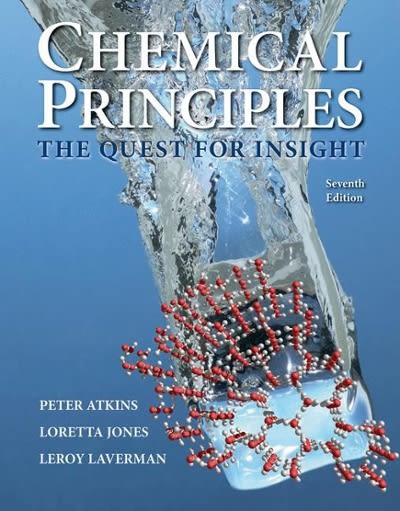Suppose you are working in a carbon dating laboratory and are examining a piece of wood found
Question:
Suppose you are working in a carbon dating laboratory and are examining a piece of wood found in an archaeological site in Arizona. You find that a carbon sample of mass 1.00 g from the piece of wood undergoes 7.90 * 103 carbon-14 disintegrations in a period of 20.0 h. In the same period, 1.00 g of carbon from a modern source you are using as a standard undergoes 1.84 * 104 disintegrations. Calculate the age of the sample, given that the half-life of 14C is 5.73 ka.
ANTICIPATE Because the half-life of 14C is 5.73 ka and the activity of the sample has fallen to less than half that of the modern sample, you should expect that it is more than 5730 years old.
PLAN First, rearrange Eq. 3 to give an expression for the time and then express k in terms of t1/2 by using Eq. 4. The carbon-14 activity of the modern sample can be used to represent the original activity in the ancient sample. Therefore, N/N0 is equal to the ratio of the number of disintegrations in the ancient and modern samples.
Step by Step Answer:

Chemical Principles The Quest For Insight
ISBN: 9781464183959
7th Edition
Authors: Peter Atkins, Loretta Jones, Leroy Laverman





